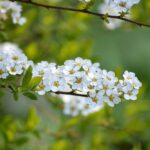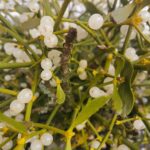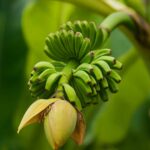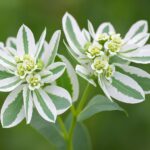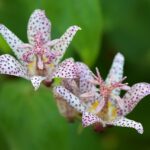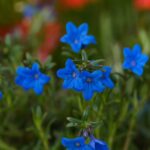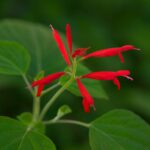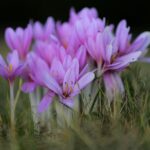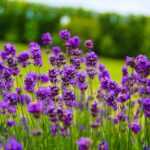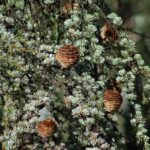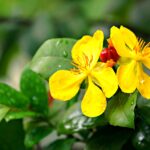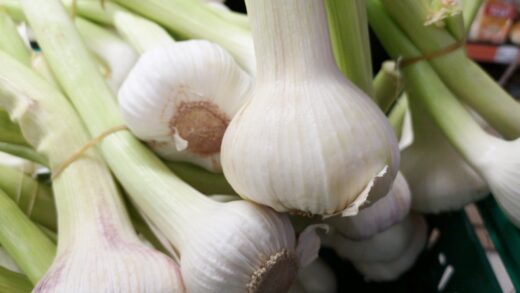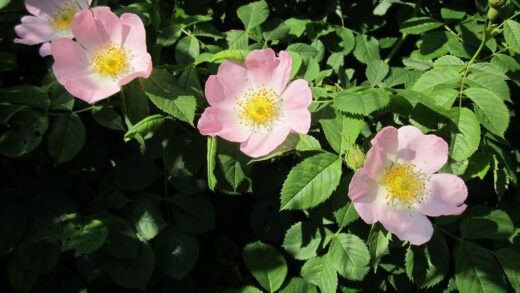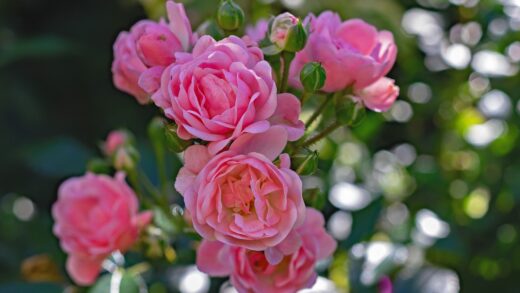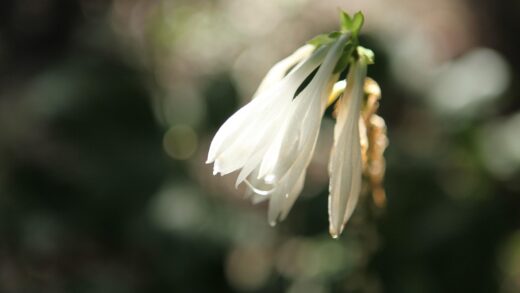The cornflower, known scientifically as Centaurea cyanus, is a beloved and widely recognized wildflower that has long adorned grain fields and gardens alike with its vibrant blue petals. Although it is fundamentally considered a hardy and resilient plant requiring relatively little care, it is not invincible. For successful cultivation and the maintenance of a healthy, abundantly flowering stand, it is essential for farmers and garden enthusiasts to be aware of the diseases and pests that can threaten it. Timely identification of these pathogens and pests and the application of appropriate control strategies are crucial for preserving plant health and maximizing flower yield. A combination of prevention, regular monitoring, and targeted intervention can ensure that the cornflower shines in its full glory.
The most common fungal diseases
Fungal infections represent the most common problem in cornflower cultivation, especially in humid, wet weather conditions or in overly dense plant stands where air circulation is limited. These microscopic pathogens spread via spores, which are carried by wind or splashing rainwater onto the plant’s surface, where they germinate under favorable conditions. Fungal diseases not only cause aesthetic damage to leaves and flowers but also weaken the plant’s overall condition by reducing its assimilation surface, which ultimately compromises the quality and quantity of flowering. Without timely intervention, the infection can quickly spread throughout the entire stand.
One of the most easily recognizable fungal diseases is powdery mildew, most often caused by the fungus Erysiphe cichoracearum. The characteristic symptom of the infection is a white, powdery coating on the leaves, stems, and even the flowers, which appears to be wipeable. This coating actually consists of the fungus’s mycelium and spores and hinders photosynthesis, causing the affected leaves to turn yellow, then brown, and eventually wither. Powdery mildew spreads particularly quickly during warm days and cool, humid nights and prefers densely planted stands where air has difficulty circulating among the plants.
Rust diseases, caused by fungal species belonging to the genus Puccinia, can also pose a serious problem. In the case of cornflower, Puccinia cyani is the most common culprit. The symptoms of the disease are distinctive: small, orange or rust-brown, raised pustules, known as uredinia, appear on the undersides of the leaves and occasionally on the stems. Thousands of spores are released from these pustules, initiating new infections. In severe infections, the leaves die prematurely and fall off, which significantly weakens the plant and reduces its ornamental value.
Downy mildew, caused by species of the genus Peronospora, is another significant, though less common, disease than powdery mildew. Unlike powdery mildew, the symptoms of downy mildew initially appear as yellowish, angular spots on the upper surface of the leaves, bounded by veins. On the underside of the leaves, within the area of these spots, a grayish-purple or whitish, velvety mold can be observed, especially in high humidity. The pathogen lives within the plant’s tissues and favors cool, wet weather. The infection can lead to the plant’s wilting, distortion, and in severe cases, complete death.
More articles on this topic
Rarer but dangerous pathogens: Bacteria and viruses
Although fungal infections are the most widespread, cornflowers can also be attacked by bacterial and viral pathogens, which often cause even more severe and difficult-to-manage problems. These diseases are less common, but their appearance can cause serious losses, as control options are more limited and the focus is primarily on prevention. The symptoms of bacterial and viral infections are often ambiguous and can be confused with signs caused by other abiotic stresses (e.g., nutrient deficiencies), so accurate diagnosis can be challenging. Their spread often occurs through insect vectors or infected plant debris.
Bacterial leaf spot can be caused by various bacterial species, such as members of the genera Pseudomonas or Xanthomonas. The characteristic symptom of the disease is water-soaked, translucent spots on the leaves, which later turn dark brown or black and are often surrounded by a yellow halo. The bacteria enter the plant through small wounds or natural openings (stomata). Overhead irrigation, which splashes soil particles and pathogens onto the leaves, significantly promotes the spread of the infection. The basis of control is prevention: removing infected plant parts and using drip irrigation.
Viral diseases are relatively rare in cornflowers but all the more dangerous because there is no direct chemical control against them. Viruses such as Cucumber Mosaic Virus (CMV) or Tobacco Mosaic Virus (TMV) can infect the plant. The symptoms can be varied: a yellowish-green mosaic pattern on the leaves, leaf curling, stunted growth, and distorted flowers. Viruses are most commonly transmitted from one plant to another by sucking pests, especially aphids.
Since chemical control is ineffective or only partially effective against bacterial and viral infections, the greatest emphasis must be placed on prevention. This includes using certified, disease-free seed, practicing crop rotation, and carefully removing plant debris and weeds from the area, as these can serve as shelters and sources of infection. However, the most crucial step is the consistent control of insect vectors that transmit viruses, such as aphids. If a plant shows signs of a viral infection, it must be immediately removed and destroyed to prevent the disease from spreading throughout the stand.
More articles on this topic
The attack of animal pests
Cornflower stands are threatened not only by microscopic pathogens but also by numerous animal pests. These pests cause damage in two ways: firstly, their direct feeding weakens the plant, and secondly, as already mentioned, they play a key role in the transmission of many diseases, especially viruses. The appearance of pests is often linked to specific weather conditions, and their populations can multiply extremely quickly, so regular monitoring and early intervention are essential. Healthy, well-conditioned plants are generally more resistant to pest attacks, but a major infestation can affect even the strongest stand.
Aphids (Aphididae) are one of the most common and problematic pests of cornflower. These small, soft-bodied insects suck the plant’s sap in large colonies, primarily on young shoot tips and the undersides of leaves. Their feeding causes the leaves to become distorted and curled, and growth slows down. Additionally, aphids excrete a large amount of sugar-rich waste, known as honeydew, on which sooty mold grows. This black coating inhibits photosynthesis, further weakening the plant. The greatest danger, however, is that aphids are the primary vectors of viruses in the plant world.
Thrips (Thysanoptera) are tiny, slender insects that are difficult to see with the naked eye. Their damage is characteristic: small, silvery feeding marks appear on the leaves, and the flower petals may become discolored and distorted. Thrips suck the contents of plant cells, leading to tissue death. They love to hide in tight spaces like flower buds and the narrow crevices of leaves, which makes controlling them difficult. They reproduce rapidly in warm, dry weather, and their damage can become severe in a short time. Like aphids, they are also capable of transmitting certain plant viruses.
Spider mites (Tetranychidae), especially the two-spotted spider mite (Tetranychus urticae), do not belong to the class of insects but to the arachnids. These tiny creatures live on the undersides of leaves and create a fine, web-like webbing that provides them with protection. Their feeding causes small, yellowish-white dots to appear on the leaves, and then the entire leaf surface becomes marbled, takes on a bronze hue, and eventually dries up and falls off. Spider mites thrive in hot, dry, sheltered conditions and can reproduce extremely quickly, capable of destroying an entire cornflower stand in just a few weeks.
Integrated pest management in cornflower cultures
Integrated Pest Management (IPM) is a complex, ecosystem-based approach that emphasizes long-term prevention and the management of pest and pathogen populations, minimizing risks to the environment and human health. In the case of cornflower, this approach can be particularly effective, as the goal is not complete chemical sterilization but the maintenance of a balance where the presence of diseases and pests does not cause significant economic or aesthetic damage. IPM combines various control methods, from prevention and biological control to chemical interventions, but uses the latter only as a last resort and in a targeted manner.
The foundation of integrated pest management is formed by agrotechnical and cultural methods. This includes selecting a suitable growing site that ensures good drainage and adequate air circulation, thereby reducing the risk of fungal diseases. It is important to choose the correct plant spacing to avoid an overly dense stand. Practicing crop rotation helps prevent the buildup of soil-borne pathogens. Balanced nutrient supply, especially avoiding excessive nitrogen fertilization, contributes to increasing the plants’ resistance, as soft, overfed tissues are more susceptible to infections and pests.
Biological control is based on the use of natural enemies of pests. Aphids are effectively controlled by ladybugs, hoverfly larvae, and lacewings, so it is worthwhile to create an environment in the garden or field that attracts and sustains these beneficial organisms. Predatory mites (Phytoseiulus persimilis) can be introduced to control spider mites. There are also microbiological products, such as those based on the bacterium Bacillus thuringiensis, which are effective against certain insect larvae, or products containing the fungus Beauveria bassiana, which can infect many pests.
Chemical control is the final element of the integrated strategy, to be used only when preventive and biological methods prove insufficient and the level of damage reaches the economic injury level. Even then, preference should be given to selective, environmentally friendly products such as potassium soap, plant oils (e.g., rapeseed oil), or neem oil-based products. If the use of synthetic pesticides is unavoidable, it is important to select the appropriate product, adhere strictly to the dosage, and practice chemical rotation to prevent the development of resistance. Spraying should always be timed to the pest’s most vulnerable life stage, and bee-friendly technology should be used.


